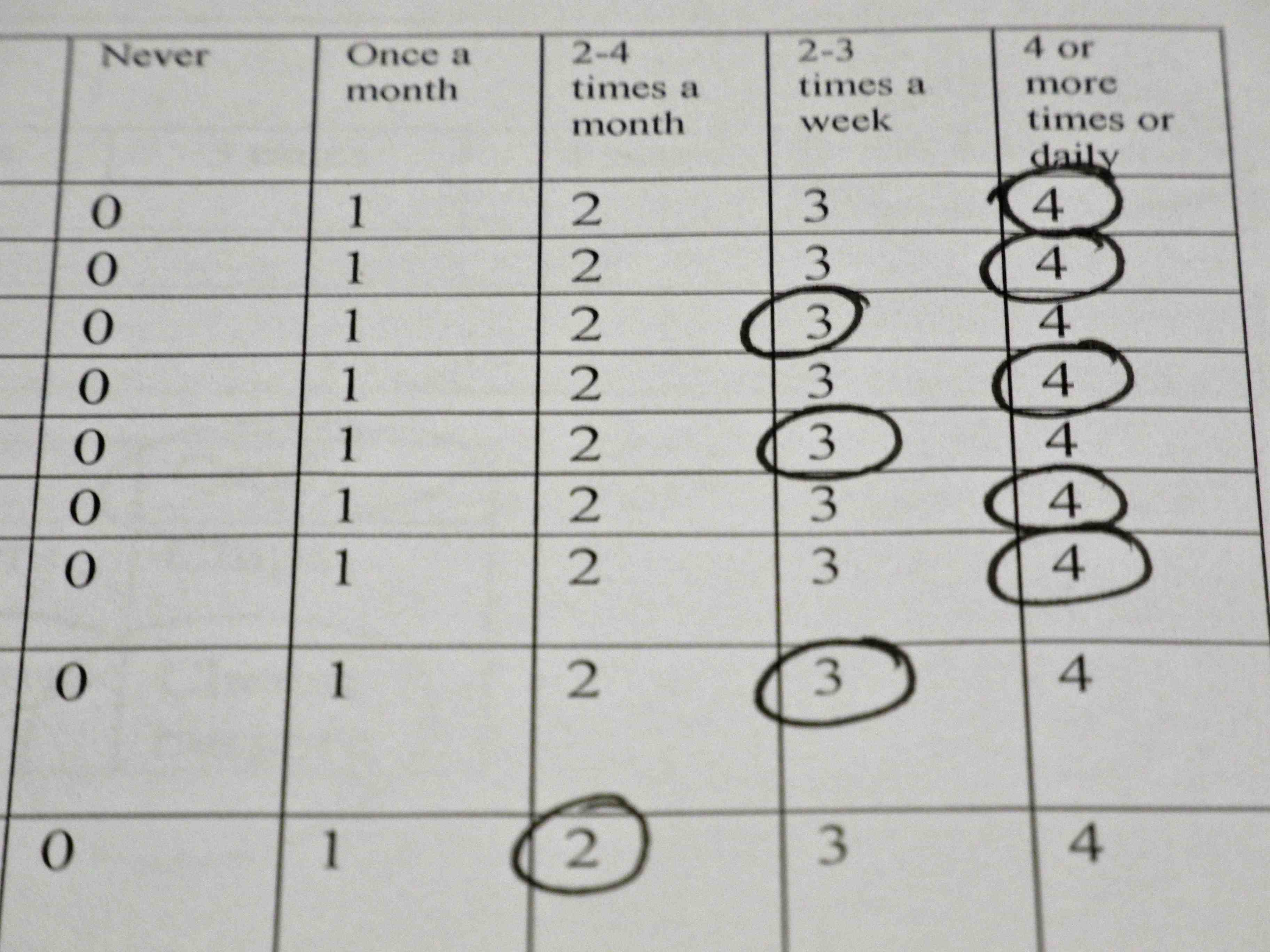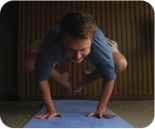Becoming Paleo, Part 1: The Yale Food Addiction Scale
 Friday, June 10, 2011 at 08:06PM
Friday, June 10, 2011 at 08:06PM Posted by John Michael
Society’s strong motivation to lose weight combined with the tremendous amount of energy and resources spent on the “obesity epidemic” suggests that the problem of obesity is not driven by a lack of motivation or effort.
 I’ve known about the Paleo Diet for several years, ever since my dad started altering his eating habits to match those set out in Dr. Loren Cordain’s book The Paleo Diet: Lose Weight and Get Healthy by Eating the Food You Were Designed to Eat. “The fact is,” Dr. Cordain writes on his website, “that virtually our entire physiologies operate exquisitely when they are functioning in the native human ecological niche in which they evolved – employing both the diet and exercise level of a hunter-gatherer.” I’d always had problems with diet and exercise (like many Americans, according to the statistics), so when my father told me about the Paleo Diet, I was interested, but acquiring it didn’t seem feasible, because, while I recognized that this diet was probably my best option, I couldn’t control my eating habits, which were driven by cravings that appeared out of my control, and the Paleo Diet is all about restricting what we eat to the foods that our hunter-gatherer ancestors enjoyed. The diet remained in my head, a seeming impossibility until recently, when Yale University published the Yale Food Addiction Scale, and I decided to take control of my eating habits.
I’ve known about the Paleo Diet for several years, ever since my dad started altering his eating habits to match those set out in Dr. Loren Cordain’s book The Paleo Diet: Lose Weight and Get Healthy by Eating the Food You Were Designed to Eat. “The fact is,” Dr. Cordain writes on his website, “that virtually our entire physiologies operate exquisitely when they are functioning in the native human ecological niche in which they evolved – employing both the diet and exercise level of a hunter-gatherer.” I’d always had problems with diet and exercise (like many Americans, according to the statistics), so when my father told me about the Paleo Diet, I was interested, but acquiring it didn’t seem feasible, because, while I recognized that this diet was probably my best option, I couldn’t control my eating habits, which were driven by cravings that appeared out of my control, and the Paleo Diet is all about restricting what we eat to the foods that our hunter-gatherer ancestors enjoyed. The diet remained in my head, a seeming impossibility until recently, when Yale University published the Yale Food Addiction Scale, and I decided to take control of my eating habits.
The Yale Food Addiction Scale is a survey designed to detect and measure the severity of food addiction. While food addiction’s not fully recognized by the medical establishment as a disorder, several studies have been conducted to explore the possibility of its existence. Although some of these studies seem strange, like the one which found that rats preferred high doses of sugar to comparable doses of cocaine, or the one which studied the fierce sweet tooth that former alcoholics can develop, others are serious attempts to define what food addiction is and to create tools that measure it. (Interestingly, all of these studies suggest that food addiction is caused by the exorbitant excitation of reward circuits that evolved in our brains during the times of our hunter-gatherer ancestors. This leads me to speculate that perhaps food addiction is due to an excessive stimulation of these reward circuits, which evolved in the absence of “high fat and high sugar foods,” and which were perhaps never meant to be as stimulated as they are today.)
After reading about the release of the Yale Food Addiction Scale, I decided to take it myself, because I had recognized my own eating problem in the articles that I had read about it. The survey, composed of twenty-seven items, is based on the American Psychiatric Association’s substance dependence criteria, as well as other scales “used to assess behavioral addictions, such as gambling, exercise, and sex.” As I took this survey, my eating problem began to take shape in my mind. It was most revealed by the items that I scored highly on. The first sixteen items are statements, like, “I find that when I start eating certain foods, I end up eating more than planned,” that the participant scores from 0 to 4, with 0 being “never,” 1 being “once a month,” 2 “2-4 times a month,” 3 “2-3 times a week,” and 4 “4 or more times daily.” Among the statements that I marked 4 on were, “I find myself continuing to consume certain foods even though I am no longer hungry,” “I have consumed certain foods to prevent feelings of anxiety, agitation, or other physical symptoms that were developing,” and, “My behavior with respect to food and eating causes significant distress.” The second to last item asks participants to check foods that they “have problems with.” Which foods did I mark? Ice cream, hamburgers, cheeseburgers, soda pop, chocolate, doughnuts, and cookies.
Like I’ve told students in the classroom, the first step in solving a problem is recognizing that you have one. I had known for years that I had a problem with eating, and now, with the Yale Food Addiction Scale, I had begun to take the second step in problem-solving: observing the problem that you have, so that you can figure out a way to solve it.
Stay tuned for Becoming Paleo, Part 2: The Anxiety Barrier.
Related Posts
Becoming Paleo, Part 2: The Anxiety Barrier
Becoming Paleo, Part 3: Breaking the Anxiety Barrier
Becoming Paleo, Part 4: The Projections of Anxiety
 John Michael is a traveling writer and a teacher with a deep interest in humankind’s connection to the natural world. Learn more.
John Michael is a traveling writer and a teacher with a deep interest in humankind’s connection to the natural world. Learn more.


Reader Comments (1)
Acknowledging the addiction is indeed the first step towards recovery. The scale is truly instrumental to better understand the already complex nature of food addiction.